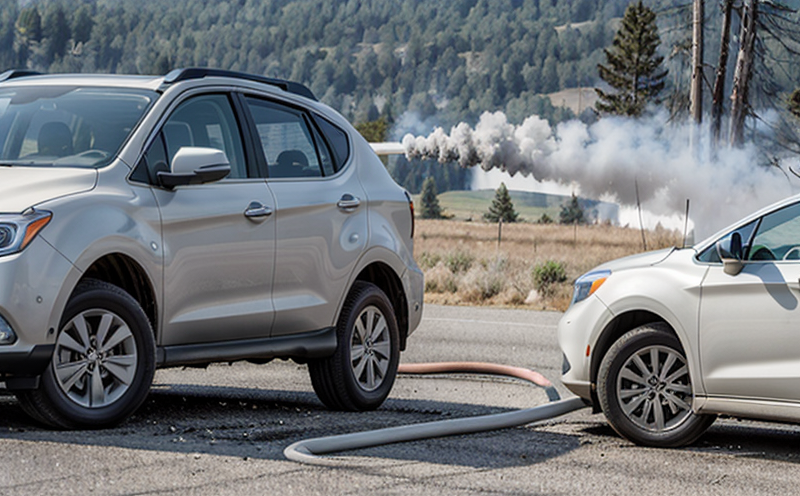Fire-Induced Smoke Toxicity Evaluation
In fire safety testing, evaluating smoke toxicity is a critical step in ensuring that building materials and products do not only meet the structural integrity requirements but also protect occupants from harmful emissions. This service focuses on quantifying the levels of toxic gases and particulates released during a simulated fire event. These tests are crucial for compliance with international standards and regulations designed to enhance public safety.
The primary goal is to determine the smoke density and concentration of specific toxic compounds such as carbon monoxide (CO), hydrogen cyanide (HCN), and other combustion byproducts. The evaluation helps in understanding how these materials contribute to reduced visibility, respiratory issues, and potential health hazards during a fire event.
Testing is conducted using advanced laboratory equipment that simulates real-world fire scenarios. Specimens are exposed to controlled fire conditions, and the resulting smoke is analyzed for its composition and density. This process not only aids in product development but also ensures compliance with stringent safety regulations globally.
The results of these tests play a vital role in certifying products as safe for use within buildings where occupants could be at risk during fires. Compliance with international standards like ISO 13954 and ASTM E2474 is essential for manufacturers to ensure their products meet the highest safety benchmarks.
In summary, fire-induced smoke toxicity evaluation is a comprehensive process that assesses both the physical properties of emitted smoke and its potential impact on human health. It ensures that materials used in construction and manufacturing are not only robust but also environmentally friendly and safe for use.
Applied Standards
| Standard | Description |
|---|---|
| ISO 13954-3:2017 | Fire resistance test for building materials and products, part 3: Determination of smoke density. |
| ASTM E2474-18 | Standard practice for assessing the toxicological effects of fire-generated smoke. |
Scope and Methodology
The scope of this service includes evaluating the toxicity of smoke produced by various materials under controlled fire conditions. The methodology involves several key steps:
- Selection of appropriate specimens based on their intended use.
- Setting up a controlled environment to simulate real-world fire scenarios.
- Exposure of the specimen to the simulated fire, ensuring consistent conditions.
- Capture and analysis of emitted smoke using advanced instrumentation.
The methodology is designed to provide accurate and reliable data that can be used for both compliance verification and product development. The process also ensures that all tests are conducted in accordance with relevant international standards, ensuring the highest level of accuracy and consistency.
International Acceptance and Recognition
- The service is recognized by major regulatory bodies worldwide, including OSHA (Occupational Safety and Health Administration) in the United States.
- Results from this testing are accepted in numerous countries adhering to international standards such as ISO and ASTM.





